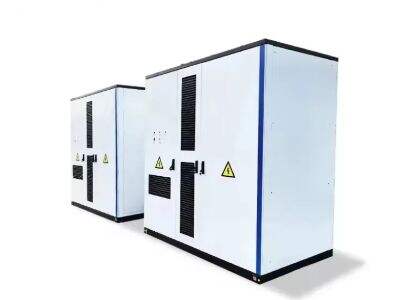In time, the way we obtain energy might also change. Rather than drawing on giant power plants from afar, people could begin using what are known as off-grid microgrids. These microgrids can enable homes and businesses to generate their own power through the sun and store it in lithium iron phosphate energy storage systems. This novel process for producing energy might help to save the environment and ensure a supply of electricity for everyone, even in remote locations.
The Future of Solar Power in Off-the-Grid Microgrids
Solar power is a clean and renewable source of power that originates from the sun. Filmed March 2017 With the palette of one set of solar panels controlling the light reaching the second set of panels, we can convert sunlight into electricity to power our homes and devices using special panels called solar panels. These solar panels can be mounted on rooftops or in fields, while off-grid microgrids designates areas without access to an electric grid can capture solar energy and convert it into electricity. In other words, even if a remote location has no traditional power lines, it can still enjoy access to energy, provided there is sunlight.
How Lithium Iron Phosphate Energy Storage is Changing the Microgrid Game off Grid
Sun goes down and we’re not able to generate electricity from solar panels.” Enter lithium iron phosphate energy storage to clear all of this up. This unique type of battery serves as a bank to save surplus energy that solar panels create during the day and getting the energy out when needed, such as at night or on cloudy days. Using these batteries, off-grid microgrids can ensure that electricity is available to everyone, even when the sun isn’t shining, is more consistent.
The Key to Successful Off Grid Microgrid Development
Photo Source: rbenzk Sorry, no magic bullet, but working on sustainable off-grid microgrid battery storage system. The word sustainable is the idea that we should be able to sustain our ability to use resources without using them up or harming the environment. Solar energy and lithium iron phosphate energy storage can also be jointly used – this measure can reduce the dependence of off-grid microgrid to fossil fuels such as coal and gas that could be harmful to the planet. That way, we can pave the way for a cleaner, more sustainable future for everybody.
AMEND YOUR BUSINESS PLAN NOW FOR THE FUTURE OF OFF-GRID MICROGRIDS
We need a plan to ensure that off-grid microgrids function well. This requires planning how to establish and maintain these microgrids in the most efficient way possible. One hopeful approach for off-grid microgrids going forward is to join forces. When we bring together people in the areas of solar energy, battery storage and grid management, we can determine the best alternatives for building efficient and dependable off-grid microgrid battery storage that will work in communities throughout the world.
How Solar and Lithium Iron Phosphate Storage are Revolutionising Off Grid Microgrids
Solar and LFP storage are turning the energy marketplace on it’s head, giving off grid communities clean, reliable power where and when they need. As technology and interdisciplinary efforts continue to evolve, solar and battery-fueled off-grid microgrid energy storage are becoming more obtainable and cost-effective. That will give more people the ability to benefit from clean electricity, without harming the environment, and means a brighter future for all of us.
Table of Contents
- The Future of Solar Power in Off-the-Grid Microgrids
- How Lithium Iron Phosphate Energy Storage is Changing the Microgrid Game off Grid
- The Key to Successful Off Grid Microgrid Development
- AMEND YOUR BUSINESS PLAN NOW FOR THE FUTURE OF OFF-GRID MICROGRIDS
- How Solar and Lithium Iron Phosphate Storage are Revolutionising Off Grid Microgrids

 EN
EN
 AR
AR BG
BG DA
DA NL
NL FI
FI FR
FR DE
DE EL
EL HI
HI IT
IT JA
JA NO
NO PL
PL PT
PT RO
RO RU
RU ES
ES TL
TL ID
ID UK
UK VI
VI TH
TH TR
TR AF
AF MS
MS BE
BE AZ
AZ BN
BN JW
JW KN
KN KM
KM LO
LO LA
LA MY
MY UZ
UZ KY
KY LB
LB XH
XH
